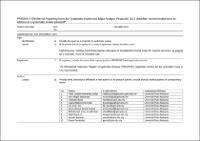| dc.contributor | Vall d'Hebron Barcelona Hospital Campus |
| dc.contributor.author | Mohamad Safiai, Nabil Izzaatie |
| dc.contributor.author | Mohamad, Nur Afiqah |
| dc.contributor.author | Basri, Hamidon |
| dc.contributor.author | Inche Mat, Liyana Najwa |
| dc.contributor.author | Hoo, Fan Kee |
| dc.contributor.author | Abdul Rashid, Anna Misyail |
| dc.contributor.author | Pozo Rosich, Patricia |
| dc.date.accessioned | 2022-03-21T08:56:53Z |
| dc.date.available | 2022-03-21T08:56:53Z |
| dc.date.issued | 2021-06-17 |
| dc.identifier.citation | Mohamad Safiai NI, Mohamad NA, Basri H, Inche Mat LN, Hoo FK, Abdul Rashid AM, et al. High-frequency repetitive transcranial magnetic stimulation at dorsolateral prefrontal cortex for migraine prevention: A protocol for a systematic review of controlled trials. PLoS One. 2021 Jun 17;16(6):e0251528. |
| dc.identifier.issn | 1932-6203 |
| dc.identifier.uri | https://hdl.handle.net/11351/7213 |
| dc.description | Migraña; Estimulación magnética transcraneal; Corteza prefrontal |
| dc.language.iso | eng |
| dc.publisher | Public Library of Science |
| dc.relation.ispartofseries | PLoS ONE;16(6) |
| dc.rights | Attribution 4.0 International |
| dc.rights.uri | http://creativecommons.org/licenses/by/4.0/ |
| dc.source | Scientia |
| dc.subject | Migranya - Prevenció |
| dc.subject | Magnetoteràpia |
| dc.subject | Migranya - Tractament |
| dc.subject.mesh | Migraine Disorders |
| dc.subject.mesh | /prevention & control |
| dc.subject.mesh | Transcranial Magnetic Stimulation |
| dc.title | High-frequency repetitive transcranial magnetic stimulation at dorsolateral prefrontal cortex for migraine prevention: A protocol for a systematic review of controlled trials |
| dc.type | info:eu-repo/semantics/article |
| dc.identifier.doi | 10.1371/journal.pone.0251528 |
| dc.subject.decs | trastornos migrañosos |
| dc.subject.decs | /prevención & control |
| dc.subject.decs | estimulación magnética transcraneal |
| dc.relation.publishversion | https://doi.org/10.1371/journal. pone.0251528 |
| dc.type.version | info:eu-repo/semantics/publishedVersion |
| dc.audience | Professionals |
| dc.contributor.organismes | Institut Català de la Salut |
| dc.contributor.authoraffiliation | [Mohamad Safiai NI, Mohamad NA, Basri H, Inche Mat LN, Hoo FK, Abdul Rashid AM] Department of Neurology, Faculty of Medicine and Health Sciences, Universiti Putra Malaysia, Serdang, Selangor, Malaysia. [Rosich P] Unitat de Cefalea i Dolor Craniofacial, Servei de Neurologia, Vall d’Hebron Hospital Universitari, Barcelona, Spain. Grup de Recerca en Cefalees i Dolors Neurològics, Vall d’Hebron Institut de Recerca (VHIR), Barcelona, Spain |
| dc.identifier.pmid | 34138860 |
| dc.identifier.wos | 000671690200050 |
| dc.rights.accessrights | info:eu-repo/semantics/openAccess |

 Área privada
Área privada Contacto
Contacto








